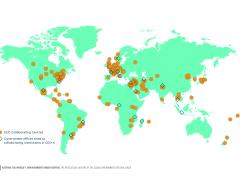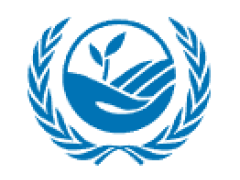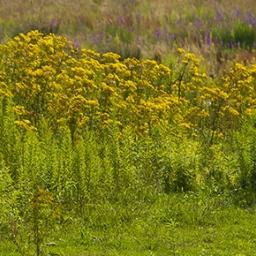Certifying supply chains of resources helps to conserve natural capital in tropics
Resources imported into the Netherlands, such as soya, palm oil, cacao and tropical wood, are increasingly certified according to international market standards for sustainable production. Such production methods also cover the conservation of natural capital. This provides several benefits to society, such as reduced environmental pollution, lower negative impact on human health effects and avoided climate change. But for the producers, the financial net benefits of certified production are often only modest. This hampers the scaling up of sustainable resource production.
In addition to certification, other options and measures by both private and public actors are also required to conserve natural capital and the value this represents.
The production of tropical resources causes various environmental pressures and leads to deforestation, which in turn leads to the disappearance of natural capital and the services it provides to society. For example, when forests are cut down, services such as wood production and carbon storage are lost.
PBL Netherlands Environmental Assessment Agency has conducted a study into the potential impact of certified trade on better management and conservation of natural capital in regions where resources are produced. An analysis was made of the financial and societal costs and benefits of certified versus conventional resource production.
Costs and benefits of certified production are distributed unequally
Cost-benefit analyses showed that certified production systems have positive effects on conserving and sustainably using natural capital, but the benefits vary for the stakeholders involved, such as producers and the local and global population. Certifying production may yield net financial benefits for producers. For example, under certification, large-scale monoculture cacao plantations are converted into agro-forestry systems. Soil quality is improved by planting trees and the costs for pesticides and fertilizer become lower. There are also new forms of revenue from fruit and wood. Although cacao yields becomes lower, this loss is more than compensated for by the lower operational costs and the additional forms of revenue.
However, certification and implementation of market standards not always result in net positive financial benefits for producers. Producers of certified soya bear the costs of better management, although this results in lower environmental and health costs for the entire population in the surrounding area. But these societal benefits are not reflected in the price the producers receive for their produce.
Avoiding deforestation is an important criterion in almost all market standards for sustainable production. This results in several societal benefits. For the global population, these benefits consist of the maintained storage of carbon in conserved forest ecosystems. The conserved forests are also a source of food, fuel and materials for the local population. The monetary value of these goods is usually low, especially when the local population is self-sufficient and lives at a relatively low welfare level.
New ways towards sustainable production and trade
One of the options to take ecosystem services more into account in resource production is to more explicitly address ecosystem services in the criteria of international market standards. The investigated standards were found to already contain criteria for the conservation of several ecosystem services, such as soil fertility and natural pest control. But other services, such as pollination and water treatment, are largely absent or covered only in general terms and deserve more attention.
Another important option to conserve natural capital is that of preventing deforestation in expansion areas for agricultural production. But whether certification of individual farmers is the right measure to achieve this remains an important question, as deforestation is a process taking place at higher spatial levels that are beyond the control of individual producers. Therefore, complementary spatial policies are required at the appropriate spatial level.
Lastly, the value of conserved carbon storage is particularly high and dominates all other potential benefits. This value presents opportunities for using market solutions. However, the present market prices for traded carbon are much lower than the societal value of maintained carbon storage. If we want this market mechanism to give an impulse to sustainable ecosystem management, higher prices are required. Governments have a role in this; for example, by implementing more stringent caps on emissions, which in turn would increase the need for compensation.
This study is part of the Dutch research programme on Natural Capital in the Netherlands that explores the possibilities for better integration of the value of natural capital into decision-making by companies and public organisations.




